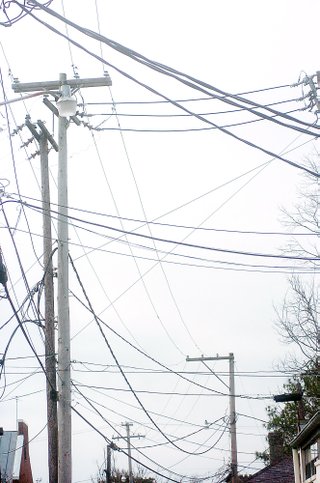
网站公告
more- Look To Secu... 25-04-16 19:58
- Online Busin... 25-04-16 19:56
- Learn How To... 25-04-16 19:54
- Finding Loca... 25-04-16 19:54
Radio Terms And Abbreviations
MarianneElizabeth3 2025.04.15 18:26 查看 : 1
 A receiving circuit that gives extra amplification to weak alerts but at the price of further background noise and potential distortion. A filter that makes use of a community of mechanical piezoelectric parts to obtain excessive rejection of undesirable indicators. A slang time period for gear that uses vacuum tubes. Radio signals from 300 to 3000 kHz, though this term is usually used to imply any radio sign within the AM broadcast band (540 to 1700 kHz). An antenna appropriate for operation on just one band of frequencies. Whether an antenna transmits or receives most radio vitality within the horizontal or vertical aircraft. FEC: Abbreviation for ahead error correction, a FSK mode that transmits every character twice to keep away from errors. An antenna that transmits and receives equally properly in all directions. A ratio of 1:1 is right; something larger than 2:1 usually signifies a problem in the feedline or antenna. A dipole antenna with several coils, or "traps," that enable the antenna for use on several bands.
A receiving circuit that gives extra amplification to weak alerts but at the price of further background noise and potential distortion. A filter that makes use of a community of mechanical piezoelectric parts to obtain excessive rejection of undesirable indicators. A slang time period for gear that uses vacuum tubes. Radio signals from 300 to 3000 kHz, though this term is usually used to imply any radio sign within the AM broadcast band (540 to 1700 kHz). An antenna appropriate for operation on just one band of frequencies. Whether an antenna transmits or receives most radio vitality within the horizontal or vertical aircraft. FEC: Abbreviation for ahead error correction, a FSK mode that transmits every character twice to keep away from errors. An antenna that transmits and receives equally properly in all directions. A ratio of 1:1 is right; something larger than 2:1 usually signifies a problem in the feedline or antenna. A dipole antenna with several coils, or "traps," that enable the antenna for use on several bands.
Slang for an antenna. Slang for a face-to-face assembly between two ham radio operators or radio hobbyists. Slang for the maximum transmitter power authorized for ham radio operators. Slang term for dwelling-built, noncommercial radio gear. Another term for a floor wave. A radio wave propagated along the floor of the Earth. One full cycle of a radio wave per second. Communication between two radio stations which can be in visual sight (even if telescopically) with one another. Slang term for EME communication. FM: A term used to seek advice from section modulation. FM: Abbreviation for frequency modulation. A system that takes one signal in a specified frequency range and concurrently retransmits it in another frequency range. A device used to transform digital indicators from a Pc into an analog form that can be transmitted by radio and to convert obtained analog alerts into digital kind for show on the PCs monitor. Undesired alerts and frequencies in the output of a transmitter. The technique of altering the output service of a transmitter ultimately with a purpose to convey information.

 A repeater station that can be used by anybody; a service on its enter frequency will routinely be retransmitted on its output frequency. A modulation approach that varies the provider frequency of a transmitter in accordance with the variations in the power of the modulating audio sign. Similar to FM, this modulation method varies the carrier frequency of a transmitter in accordance with the energy and frequency of the modulating signal. DX: Any station that is tough to hear or contact on a selected frequency, or isn't heard or contacted on a selected frequency. WAZ: Abbreviation for "Worked All Zones," an award given by CQ Magazine to hams who contact different hams in 40 totally different geographic zones dividing up the globe. WAS: Abbreviation for "Worked All States," an award given by the ARRL to hams who contact other hams in all 50 states. QSL: Radiotelegraph abbreviation for "I affirm," it refers to a card or letter confirming that a contact did take place between two stations or that a listener did indeed hear a sure station. International Reply Coupon: A coupon that can be purchased at post offices which may be exchanged in international countries for return postage for a floor mail letter to the country that issued the coupon.
A repeater station that can be used by anybody; a service on its enter frequency will routinely be retransmitted on its output frequency. A modulation approach that varies the provider frequency of a transmitter in accordance with the variations in the power of the modulating audio sign. Similar to FM, this modulation method varies the carrier frequency of a transmitter in accordance with the energy and frequency of the modulating signal. DX: Any station that is tough to hear or contact on a selected frequency, or isn't heard or contacted on a selected frequency. WAZ: Abbreviation for "Worked All Zones," an award given by CQ Magazine to hams who contact different hams in 40 totally different geographic zones dividing up the globe. WAS: Abbreviation for "Worked All States," an award given by the ARRL to hams who contact other hams in all 50 states. QSL: Radiotelegraph abbreviation for "I affirm," it refers to a card or letter confirming that a contact did take place between two stations or that a listener did indeed hear a sure station. International Reply Coupon: A coupon that can be purchased at post offices which may be exchanged in international countries for return postage for a floor mail letter to the country that issued the coupon.
IRC: Abbreviation for International Reply Coupon. QRZ: Radiotelegraph abbreviation meaning "who is looking me?" It is also used to solicit the subsequent contact in a collection of contacts. QST: Radiotelegraph abbreviation for a transmission directed to all ham radio operators, it's also the title of the ARRLs month-to-month journal. QTH: Radiotelegraph abbreviation for a stations location. The room or other location the place a radio station is operated from. DXpedition: An organized effort by ham radio operators to put a uncommon location on the air, or a visit by shortwave listeners to a site for favorable DX reception. A big gathering of ham radio operators and other radio hobbyists. Slang for an informal conversation through radio. Slang for the gathering of spare components and miscellaneous objects saved by a radio operator or hobbyist. The main gadgets of equipment used at a radio station. The main impact of the E-layer on radio propagation is to absorb power from signals passing by way of it, medium voltage overhead cable although sporadic-E propagation makes possible distant communications on frequencies above 30 MHz.
?? 0
Copyright © youlimart.com All Rights Reserved.鲁ICP备18045292号-2 鲁公网安备 37021402000770号

